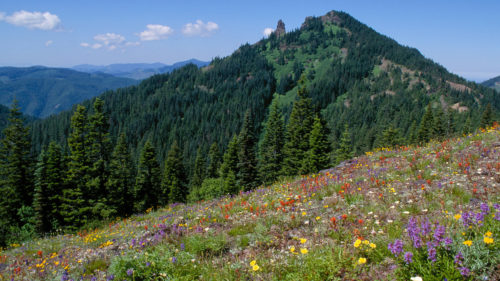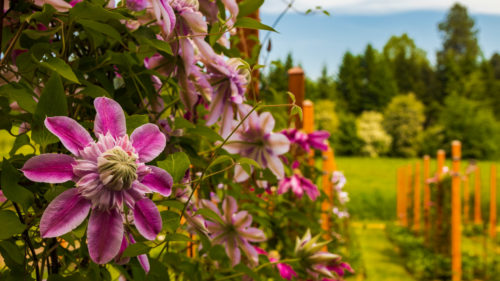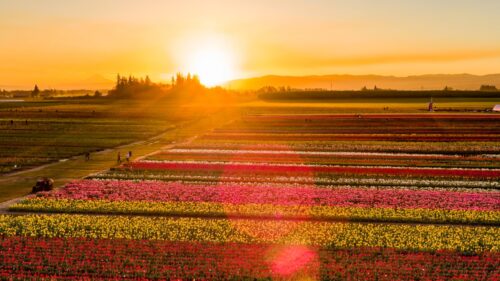Hiking in spring and early summer is a treasure hunt of color as wildflowers bloom in the meadows and mountains of Oregon, typically at their peak in May and early June. Look for blossoms on these trails and others around the state. While these flowers may be tempting for a spring bouquet, keep in mind that they are for your viewing enjoyment only — it is illegal to pick wildflowers growing on public land in Oregon.
Wherever you choose to hike, make sure to follow these tips for the best experience:
- Take care to use the boot brushes at trail entrances before and after hiking to remove seeds that can lead to invasive weed growth. Or better yet, clean your boots before you leave home.
- Stay on the trail.
- Don’t pick the flowers.
- Keep children and pets at bay when walking in sensitive areas. Always check specific pet guidelines for your trail.
- Consider joining a work party to help keep the area beautiful by removing invasive weeds. Check with your park’s website for details.
- Carry your 10 Essentials for hiking, including sunscreen, plenty of water (for pets too), snacks, a first-aid kit, a downloaded map and more.
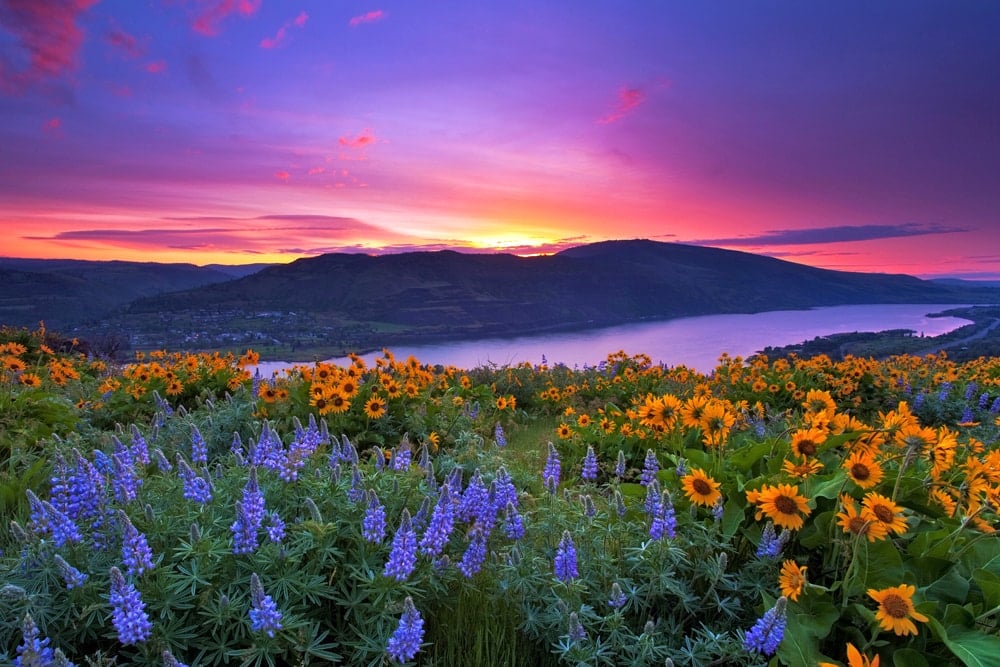
Mt. Hood & the Columbia River Gorge
Head east along the Columbia River Gorge to Mosier Plateau, for 3.5 miles of easy switchbacks, a waterfall, a walk through a pioneer cemetery and cheery wildflower meadows in April and May. There’s not just one viewpoint at the top here, but mind-bogglingly stunning views of the vista throughout. Bring the family, the dogs and a picnic and make sure to wear sunscreen, since it’s not shaded.
Or, Rowena Plateau is an easy, 2-mile round-trip hike across the plateau toward the river. Look for an explosion of Balsamroot, bachelor buttons and white yarrow. For more of a challenge, start at the same parking lot at Tom McCall Nature Preserve and take the steep climb up to McCall Point, 3.4 miles round-trip. You’ll see the purple lupine and scarlet Indian paintbrush. Ball Point in the Badger Creek Wilderness is a 7.2-mile journey through the dry eastern foothills up to a sweeping viewpoint at 3,250 feet. Expect the signature Balsamroot, lupine and Indian paintbrush as well as prairie star and Death camas.
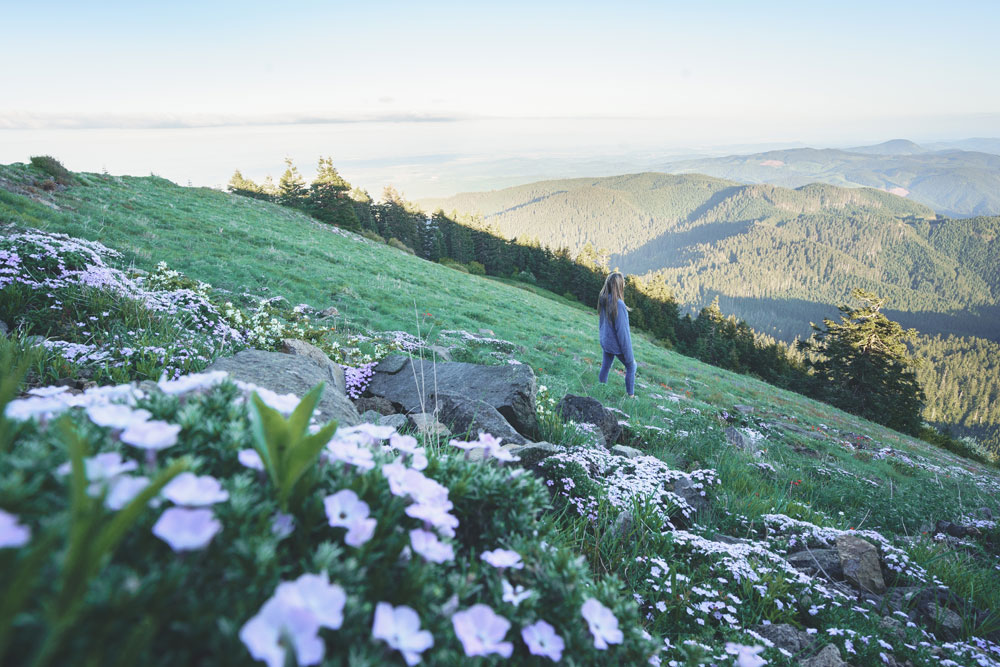
Willamette Valley
Cone Peak Trail, 36 miles east of Sweet Home, leads hikers through shady, forested trails to wildflower meadows with yellow stonecrop, pink penstemon and purple larkspur in June and early July. See plenty of flowers along the 2.4-mile loop trail or continue along the Iron Mountain Trail for 6.6 miles in all, and for be rewarded at the top with panoramic views of the Cascades.
At 4,097 feet, Marys Peak in Corvallis is the most prominent peak on Oregon’s Coast Range, with sweeping views of the Pacific Ocean to the west and numerous peaks across the Willamette Valley to the East. With four main trails to choose from, wildflowers come into bloom in the meadows and rock gardens throughout late spring and summer. Look for glacier lilies, scalloped onion, harsh Indian paintbrush, Cardwell’s penstemon and spreading phlox.
Iron Mountain Trail, close to Sweet Home in the Willamette National Forest, is a scenic 5-mile loop with a 1.4-mile add-on that leads to a beautiful lookout platform. The area is home to more than 300 types of wildflowers, including flax, penstemon, yarrow and saxifrage — all popular with hummingbirds, so look for them, too.
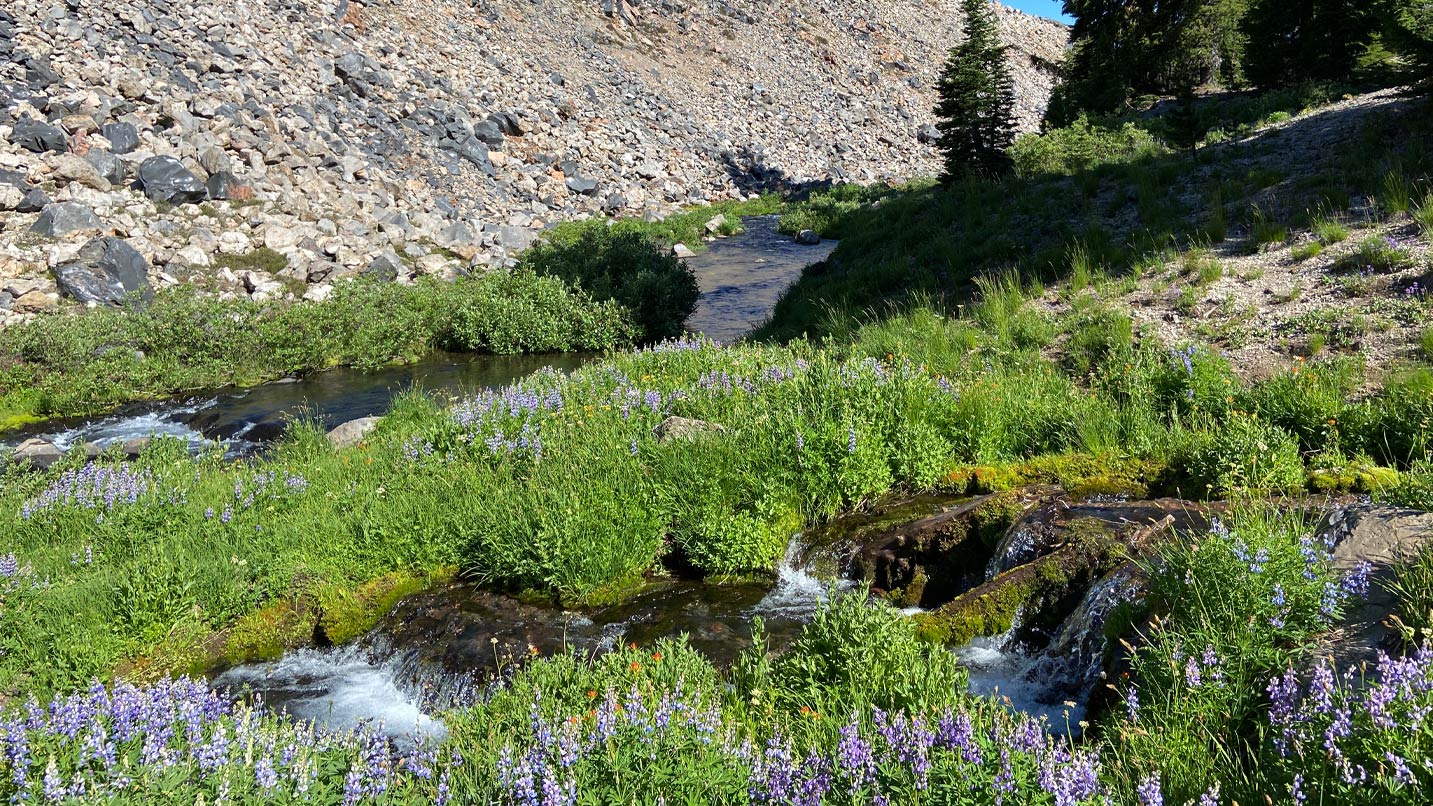
Central Oregon
Green Lakes Trail, 27 miles west of Bend, is a locals’ favorite — a moderate 4.5- to 6-mile trail that climbs alongside Fall Creek in the Three Sisters Wilderness. Go on a weekday, off-season or off peak hours in the summer to avoid crowds. Dogs need to be on leash between July 15 and September 15, and a Central Cascades Wilderness Permit is needed between June 15 and October 15. Remember to be a good steward and pack out what you bring in. Magenta paintbrush, lupine and Lewis’ monkeyflower bloom in late summer.
Located on BLM land just north of Terrebonne, Scout Camp Loop is a gorgeous springtime desert hike with views of the Deschutes River canyon. The 2.2-mile loop is steep, but worth the trip for sightings of goldthread, yellow bell and bitterroot.
Near Sisters, the Whychus Canyon Preserve offers 930 acres and more than 7 miles of hiking. For flower peeping, Whychus Rim and Creek Loop is a 4.7-mile trail that shows off in spring. The desert landscape is filled with a vibrant mix of western columbine, arrowleaf balsamroot, prickly phlox and western blue flax.
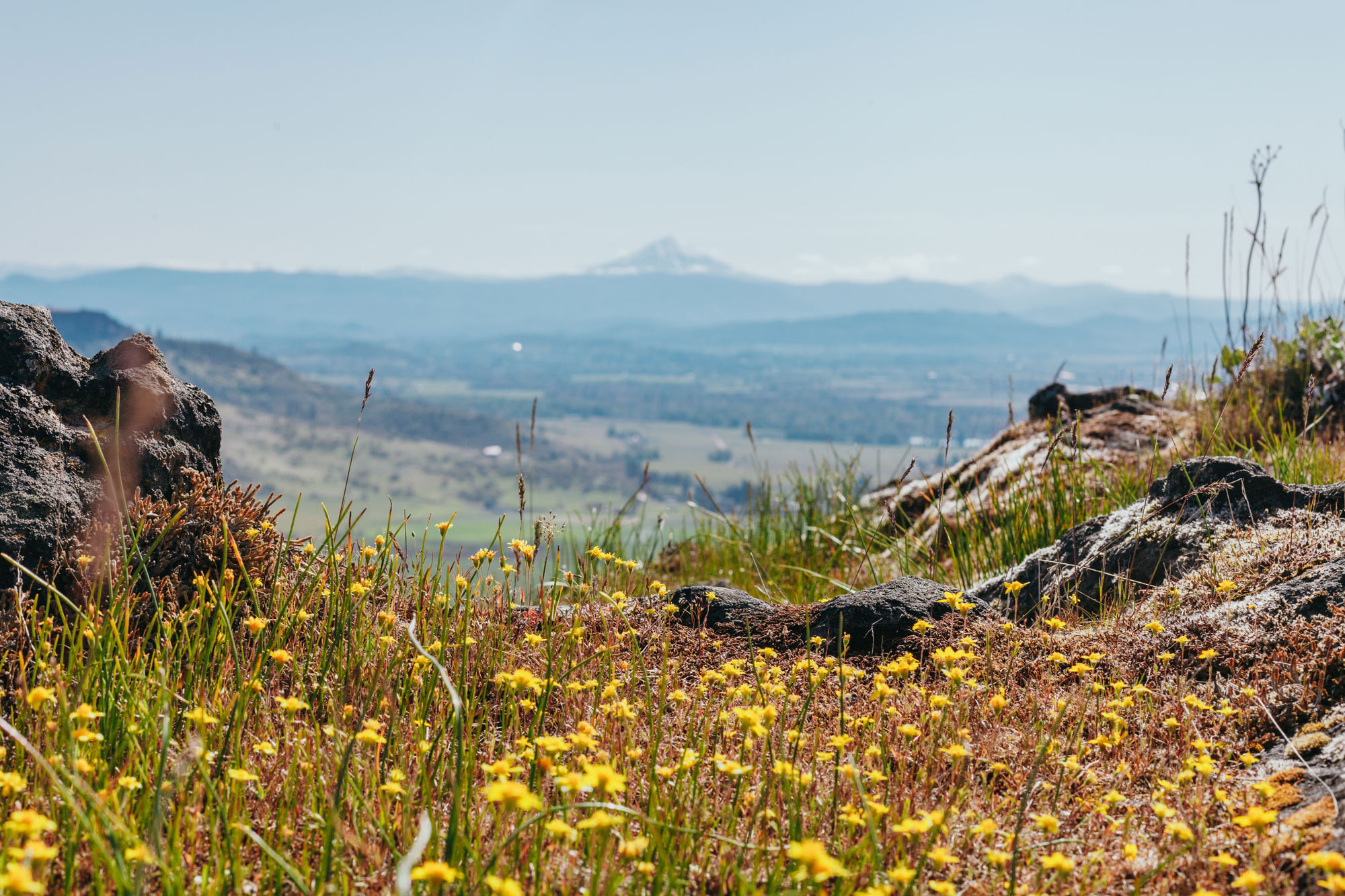
Southern Oregon
The remote Eight Dollar Mountain Trail is one of the most significant botanical sites in Oregon, known for its serpentine soils and a fen (a type of wetland) of Darlingtonia californica, better known as the cobra lily. The lily gets its name from its curious green and red-speckled bulbous head — actually a leaf — which rears up on a long stalk like a cobra. It’s even prettier when its little flowers bloom in the spring. It’s also carnivorous and the only member of the pitcher family growing wild in Oregon. A boardwalk trail leads you to this protected site; remember, it’s illegal to pick these and any other wildflowers in Oregon.
Wildflower enthusiasts will have a field day spotting the multitude of flowers and wildlife (such as deer and black bear) at Mt. Ashland Meadows, one of the more accessible sections of the Pacific Crest Trail. Between mid-June and mid-November, wander along the grand fir trees lining parts of the 6.8-mile loop to the summit, or shuttle in halfway by car or bike to Grouse Gap, where a picnic shelter awaits. It’s a quick jaunt back to civilization, two miles from the Mt. Ashland Ski Area parking lot.
Hundreds of wildflower species grow on the Table Rocks near Central Point, including the extremely rare dwarf-woolly meadowfoam — which grows on top of the Table Rocks and nowhere else in the world.
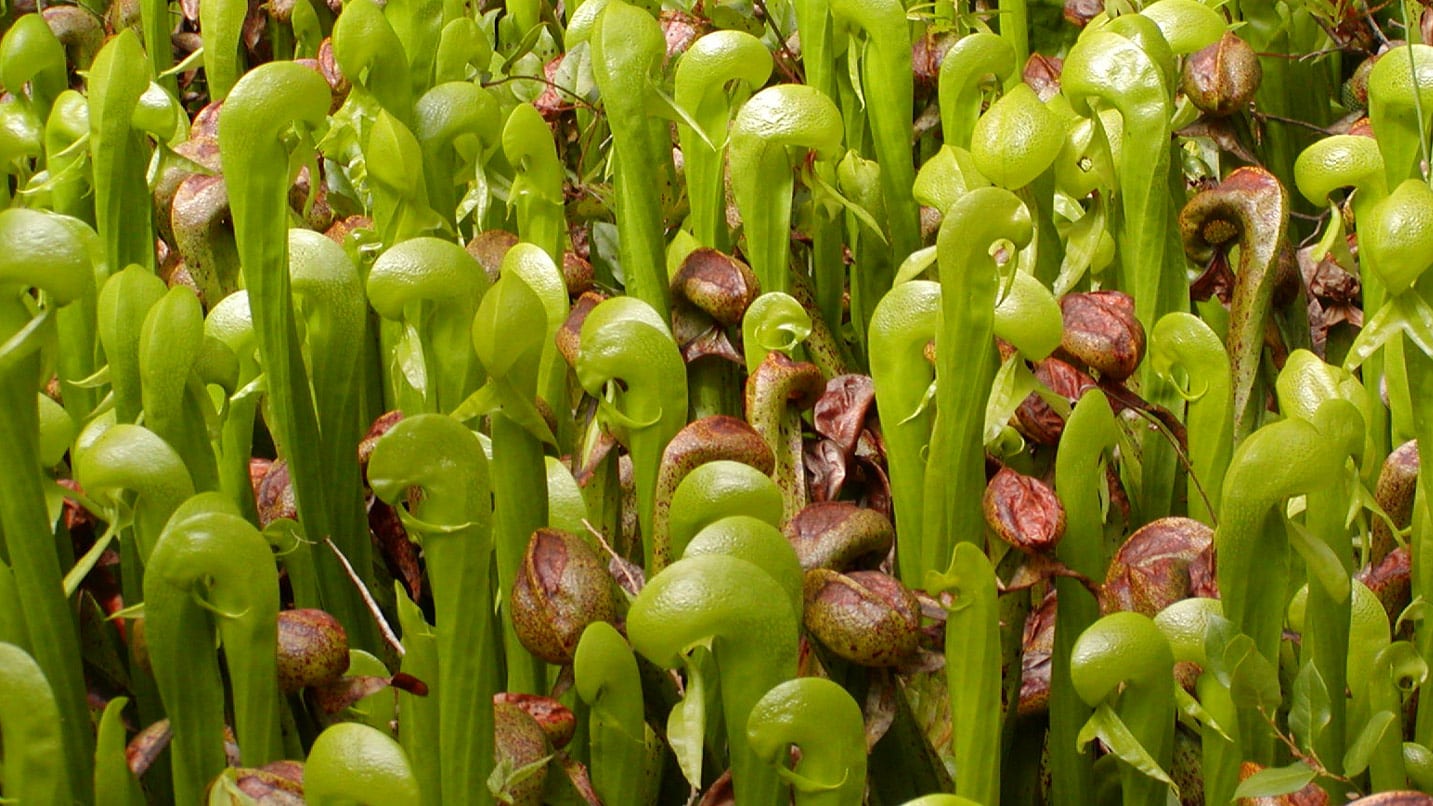
Oregon Coast
The rugged Kings Mountain Trail on the Coast Range is a challenging, 5.4-mile roundtrip hike. Find beargrass, penstemon, phlox and the rare phantom orchid. The Nature Conservancy’s Cascade Head Preserve offers a 3.4-mile trail to see rare wildflowers, including hairy checkermallow and the Cascade Head catchfly (99 percent of the catchfly’s world population found only here).
North of Reedsport, the Tahkenitch Dunes National Recreation Trail rewards hikers looking for diversity. The 6-mile loop trail begins in a conifer forest before opening up to sand dunes and views of the ocean, then circling by Threemile Lake. You can find spring-flowering rhododendron, salal and Oregon grape in the forest, and sand lupine and beach pea in the dunes.
Just south in Florence, Darlingtonia State Natural Site is another place to spy the rare cobra lily; in fact this 18-acre botanical park is dedicated to the protection of only this species. It’s also easily accessible, with parking and a boardwalk trail.
On the South Coast, Port Orford Heads State Park is home to a number of hikes where you’ll find beautiful flowers such as coast lily and coastal gumweed — all while glimpsing the stunning cliffs and eye-catching sea stacks. On the headland trails, you’ll hike through a forest of mixed conifer into rugged headlands, spotting wild iris, cat’s ear and hot-pink salmonberry flowers along the route.
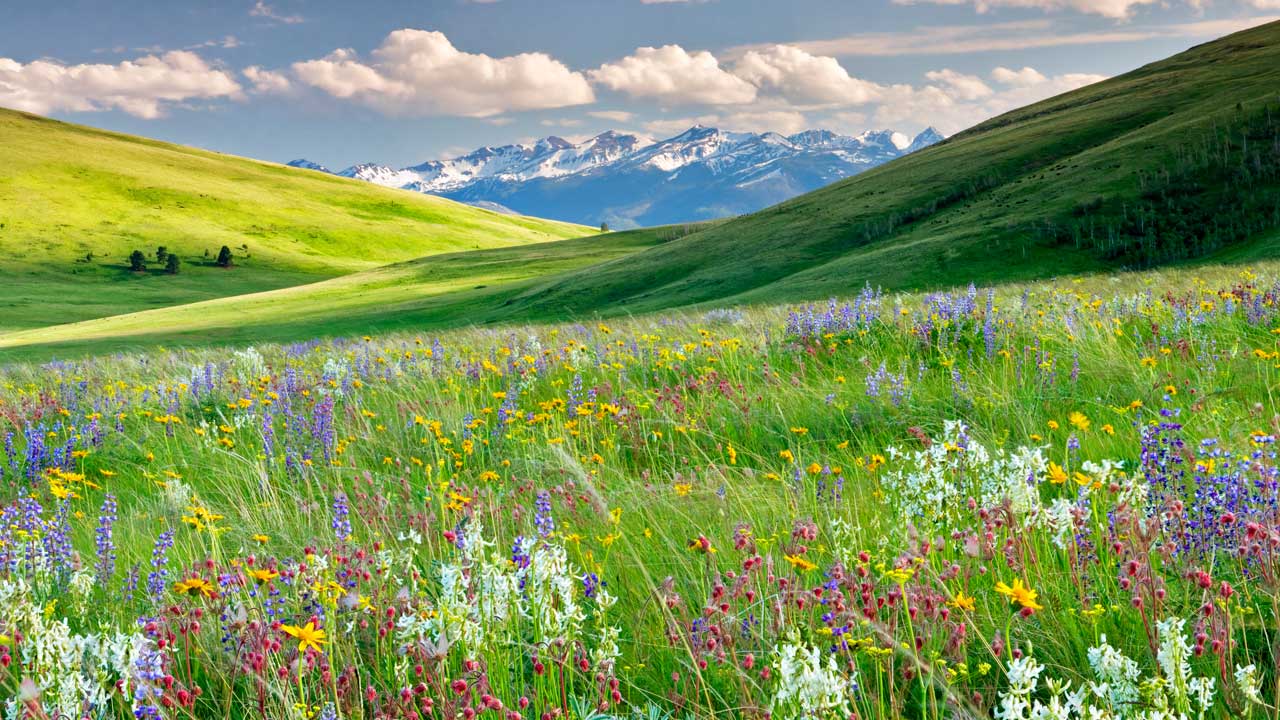
Eastern Oregon
The John Day Fossil Beds are worth a visit year-round, but especially in spring and early summer when wildflowers add to the landscape’s rich color palette. Take an easy stroll along the Clarno Unit trails to see Mariposa lilies, orange globe mallow, purple sage, prairie clovers and more. Look for golden bee plant, hedgehog cactus and bitterroot along the five Painted Hills trails through May.
A tapestry of more than 100 wildflower species — from silky lupine to goldenrod — covers the Zumwalt Prairie Preserve in remote northeastern Oregon. Review the recreation rules, as this Nature Conservancy preserve is part of the largest intact bunchgrass prairie in North America.
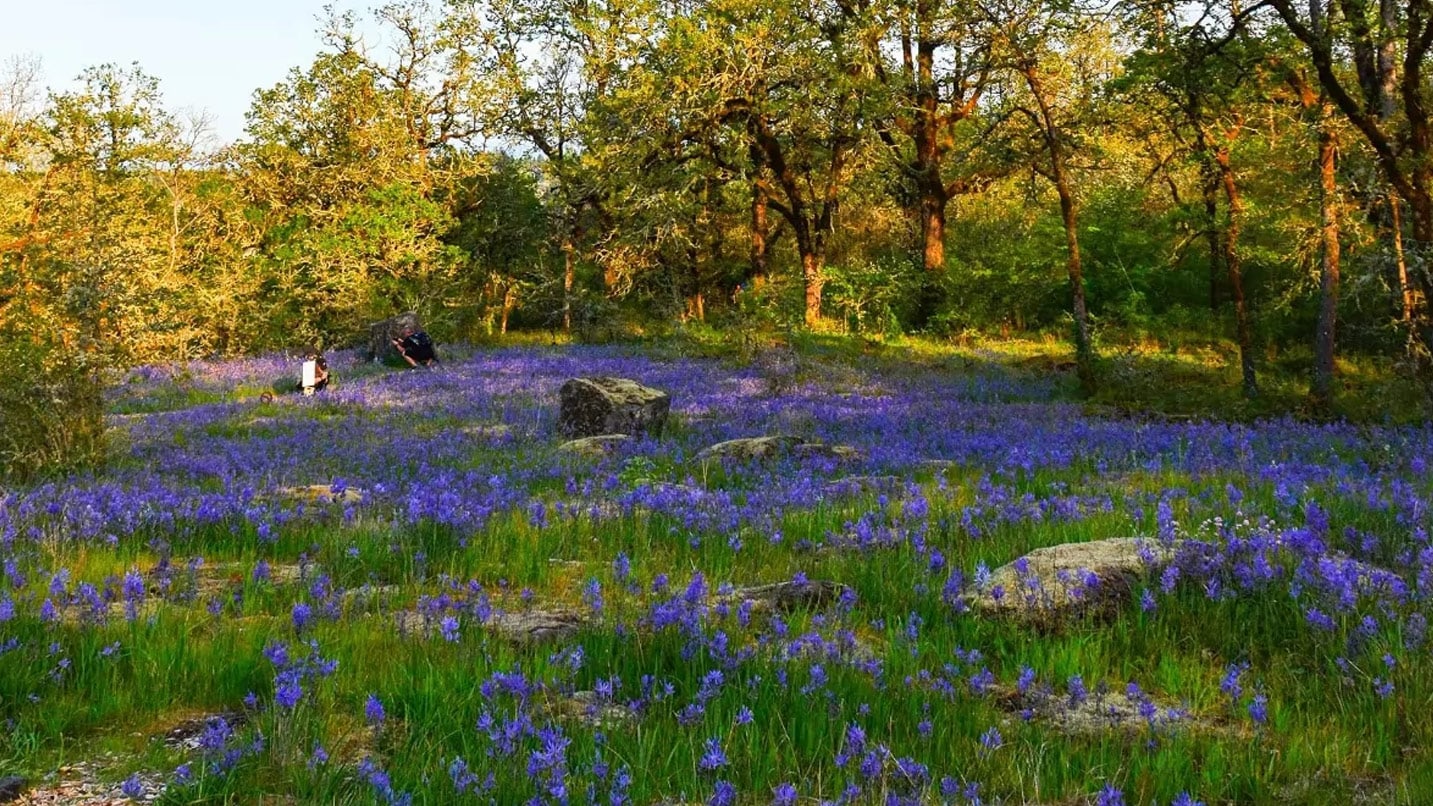
Portland Region
An oasis for urban hiking, the Tryon Creek State Natural Area southwest of Portland fills with trillium in April and May, and hikers can spot the white three-petaled flowers on many of the trails, including the aptly named Trillium Trail. The area features a mix of paved and dirt pathways that range from easy to moderate, so there’s something for everyone. Tucked in the neighborhoods of West Linn, the Camassia Natural Area is a lesser-known wildflower haven that is a must-visit come springtime. On the 1.4-mile loop hike, which features a boardwalk through sensitive areas, you’ll find many species of wildflower, including camas lily, blue-eyed Mary and buttercup.
In east Portland, the place to see wildflowers is atop an extinct cinder-cone volcano. Powell Butte Nature Park is home to 611 acres of meadowland and forest that is open to hikers, mountain bikers and horseback riders. In the spring, you can spot more than a dozen wildflower species, including foxglove, Oregon sunshine, dog rose and blue elderberry.
